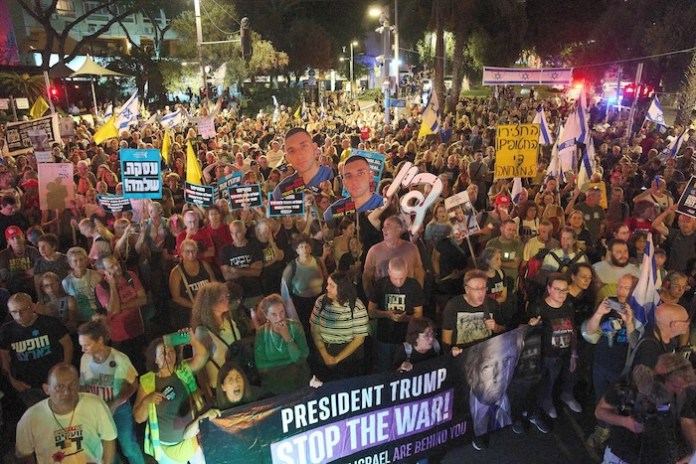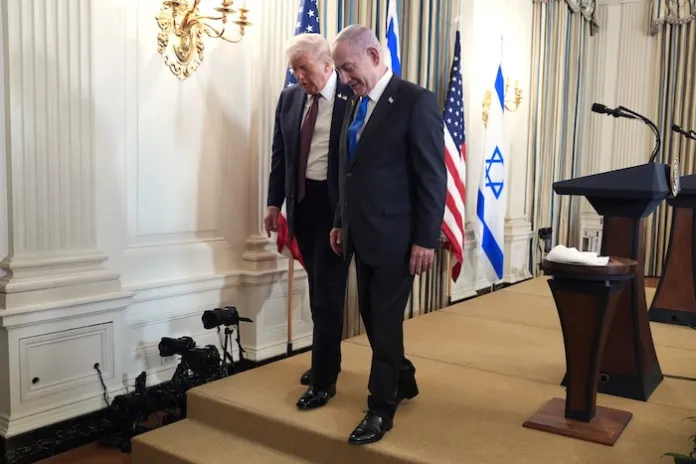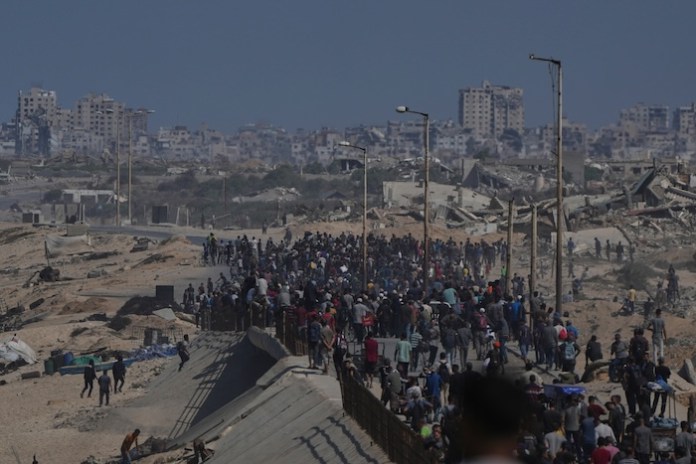Israeli Prime Minister Benjamin Netanyahu indicated that not all 48 remaining hostages will definitely be released within the 72-hour window set forth by the ceasefire agreement.
In a televised address, the prime minister said Israel will work to locate all the dead hostages in Gaza “as soon as possible.”
The comments are a stark indication that Hamas might have trouble locating and retrieving all the bodies of the hostages.
REPUBLICANS ARE PUSHING THESE FIVE DEMOCRATS TO FLIP ON FUNDING BILL
“We will bring the deceased hostages to burial in Israel,” the prime minister said. “We will work to locate all of them as soon as possible, and we will fulfill this as a sacred duty of mutual responsibility.”
On Friday, Steve Witkoff, President Donald Trump’s Middle East envoy, said the U.S. military had verified that Israeli troops had withdrawn to the agreed-upon line inside Gaza, which began a 72-hour window in which Hamas must hand over the remaining hostages.
Ruby Chen, the father of Itay Chen, one of the remaining hostages, said some families may not have the opportunity for “closure.”
“There is that scenario, some say even a realistic scenario, that Hamas will come back and say, ‘Look, we don’t have 48. We only have a lower number.’ So it might be that there are some families, including mine, that do not have closure,” he said on CNN.

Itay Chen is a dual U.S.-Israeli citizen who is believed to have been killed. His father said he hopes the administration will ensure his son’s release, dead or alive.
“I would hope to believe that this administration, that speaks so highly about America … will do their best efforts as well … making sure that my son is one of the first that come out,” he said.
Similarly, the Hostage Families Forum urged relevant parties to prioritize the release of all of the hostages.
“Israel must not accept or normalize any possibility of abandoning its dead. The people of Israel won’t rest or give up any man or woman. Our national and moral duty is to ensure the return of the last hostage — the emerging agreement must reflect that and condition any process by this term,” the forum said.
Israel has also agreed to release 250 Palestinians serving life sentences in Israeli prisons and release another 1,700 Palestinians who have been detained since Hamas’s Oct. 7, 2023, terrorist attack that started the current conflict.
On Friday, the Israeli government released some of the names of prisoners who would be released, many of whom were convicted of deadly attacks against Israelis, but it did not include a handful of high-profile individuals whom Hamas was suspected of wanting released.
“We are paying heavy prices, but for a noble goal,” said Effie Defrin, an Israel Defense Forces spokesman, regarding the release of the 250 Palestinians convicted and given life sentences.
US EXPECTED TO OVERSEE INITIAL FORCE OF 200 FOREIGN TROOPS IN GAZA, IF CEASEFIRE HOLDS
Marwan Barghouti, one of the most prominent Palestinian prisoners, was not among the list of names released by the Israeli Justice Ministry. He is serving five life sentences after being jailed in 2002 in connection with attacks that killed five civilians during the Second Intifada, or Palestinian uprising, in the early 2000s, which included several suicide bombings targeting civilians.
The current agreement does not include concrete plans for many of the longer-term problems that have plagued these negotiations since their inception.

One of the key objectives of Israel’s war against Hamas in Gaza has been to disarm the U.S.-designated terrorist organization, and the current ceasefire agreement does not include Hamas disarmament, which has been a sticking point during negotiations over the last two years.
Both Netanyahu and the IDF maintained they could still restart operations if Hamas refused to disarm.
“If this is achieved the easy way, so much the better. If not, it will be done the hard way,” Netanyahu said on Friday.
“Regarding the second goal of crushing Hamas, we have dealt a very serious blow to Hamas, its military and governmental capabilities, wherever we have fought it,” Defrin said. “Militarily and governmentally, we will not be able to live with Hamas controlling the Gaza Strip the day after. If this is achieved through negotiations, that is enough. If not, we will know how to return and fight it whenever necessary. We will not be able to live with Hamas in the Gaza Strip the day after.”
Since Israeli forces pulled back in certain areas, many Palestinians have begun moving from the southern part of the besieged enclave back north in the immediate hours after the ceasefire began. Israeli forces had urged Palestinians to evacuate from various parts of the conflict to avoid being caught in the areas of the most intense fighting.
WHAT IS ANTIFA AND HOW DOES TERRORIST DESIGNATION AFFECT LEFT-WING NETWORK?
A small number of Hamas’s internal security apparatus have started deploying to parts of the Gaza Strip in one of the first times they’ve been seen in public since the collapse of the last ceasefire, according to the Times of Israel.
If the ceasefire holds, the IDF will be replaced in many areas by an international stabilization force to oversee the security situation in Gaza. The U.S. military will oversee the force, which will consist of troops from several Arab countries, but there will not be American troops in Gaza.
, 2025-10-10 16:12:00,  , Washington Examiner, %%https://www.washingtonexaminer.com/wp-content/uploads/2023/11/cropped-favicon.png?w=32, https://www.washingtonexaminer.com/feed/, Mike Brest
, Washington Examiner, %%https://www.washingtonexaminer.com/wp-content/uploads/2023/11/cropped-favicon.png?w=32, https://www.washingtonexaminer.com/feed/, Mike Brest
